Wetland Research Centre
The Wetland Research Centre unites researchers working on applied aspects of wetland ecology. The research at the Wetland Research Centre addresses issues related to wetland management, restoration, ecology, ecosystem services and creation.
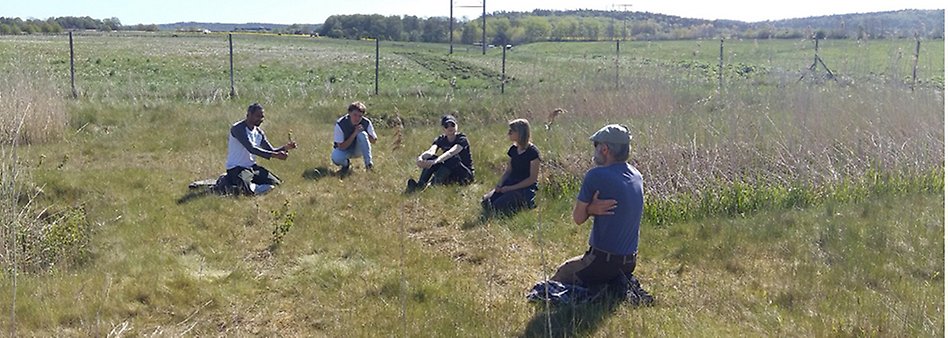
Management, restoration and creation of wetlands promote biodiversity while at the same time providing various benefits to society (ecosystem services) such as water purification, water storage, flood protection, increased landscape values, improved quality of life and carbon sequestration. The Wetland Research Centre participates in national and international collaborations connected to wetland and water issues.
The Wetland Research Centre is run in a collaboration between Halmstad University, Hushållningssällskapet i Halland and Sydvatten.
Background
Eutrophication in the south-eastern region of Kattegat became evident in the mid-1970s, when mass occurrences of green algae appeared and, among other things, caused problems for people bathing along the beaches. When oxygen depletion killed off bottom wildlife in the early 1980s, the problem became acute in Laholmsbukten. Therefore, and as a result of a large interdisciplinary land use study in the late 1980s, wetland projects with experimental sites were started in Halland. The intention was to focus not only on reducing nitrogen leakage and emissions, but also on increasing nitrogen removal on the water pathway between the fields and the sea.
Halland has long experience of working with wetlands to protect coastal waters and interest in wetlands has steadily increased. In Halland, the wetland concept was soon extended to include wetlands in urban areas as a natural element of urban planning. At the beginning of the 2020s, the importance of wetlands in both agricultural landscapes and urban environments is widely recognised in society.
Experimental wetlands
A unique test facility for scientific experimental studies is located near Plönninge outside Halmstad. The facility consists of 18 uniformly shaped (10 meters long and 4 meters wide) wetlands. By varying e.g. vegetation composition, water depth or water flow between different wetlands, the importance of different factors for the removal of pollutants can be tested.
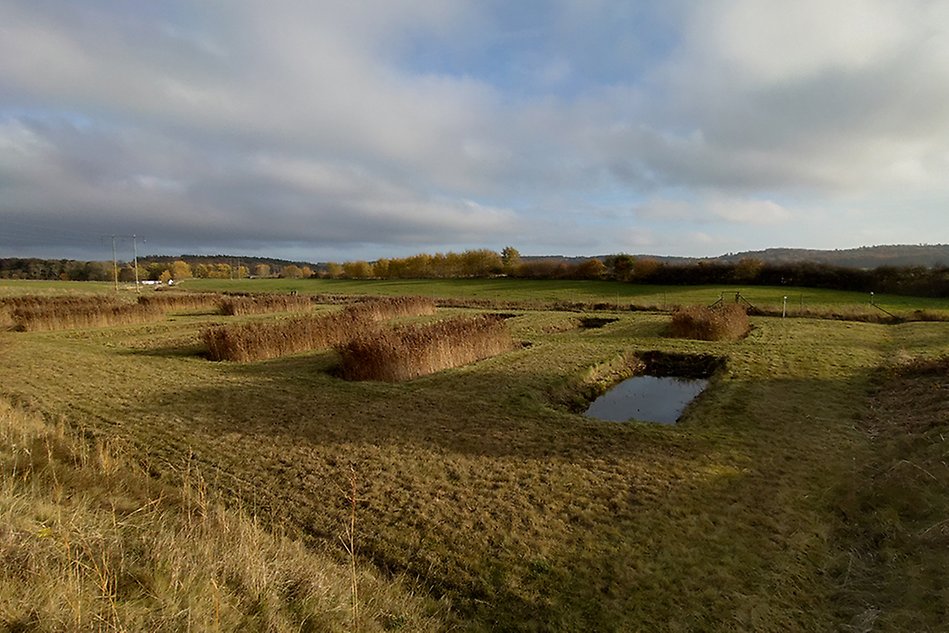
The water is supplied via distribution wells, where it is possible to administer different additives. The design makes it possible to change the flow so that the effect of different types of water flow can be investigated. The depth can also be controlled and varied in the reservoirs. The water supplied is primarily nitrogen-rich groundwater, which from an experimental point of view is ideal for research on nitrogen removal from nitrate-rich water. The facility is also designed so that it will be possible to introduce water containing other substances into the inflow to the wetlands.

Why wetlands?
Views on wetlands have shifted over time.
A hundred years ago, large parts of Sweden’s now rich agricultural areas were occupied by wetlands. These wetlands have now largely disappeared as a result of deliberate efforts to drain them. The loss of wetlands has led to a depletion of the landscape, making it more vulnerable in several ways. Biodiversity has been depleted and nutrient leakage has increased, leading to eutrophication in coastal seas.
Research has shown in various ways how wetlands can be utilised as an environmental tool. Creating or restoring wetlands provides various services to society, known as ecosystem services.
Ecosystem services provided by wetlands
Water treatment
Wetlands reduce nitrogen and phosphorus, but also heavy metals and pollutants, such as pharmaceutical residues. Wetlands deal with diffuse emissions from agriculture but also act as a step in wastewater treatment.
Pollination
Wetlands can increase the number of pollinated insects, as wetlands are a source of drinking water and a habitat for pollinating insects.
Biodiversity
Wetlands increase the biodiversity of the landscape. Wetlands are used, temporarily or permanently, by many different species for foraging, breeding or resting. Many terrestrial animals such as insects and amphibians have their larval stages in the water.

Water storage
Wetlands can help to even out flow variations. Water stored in wetlands can be used for irrigation and leads to increased groundwater recharge through infiltration.
Quality of life
Wetlands can be of direct benefit to us. Examples include outdoor recreation, angling, hunting, bird watching, nature experiences, landscape, tourism and education.
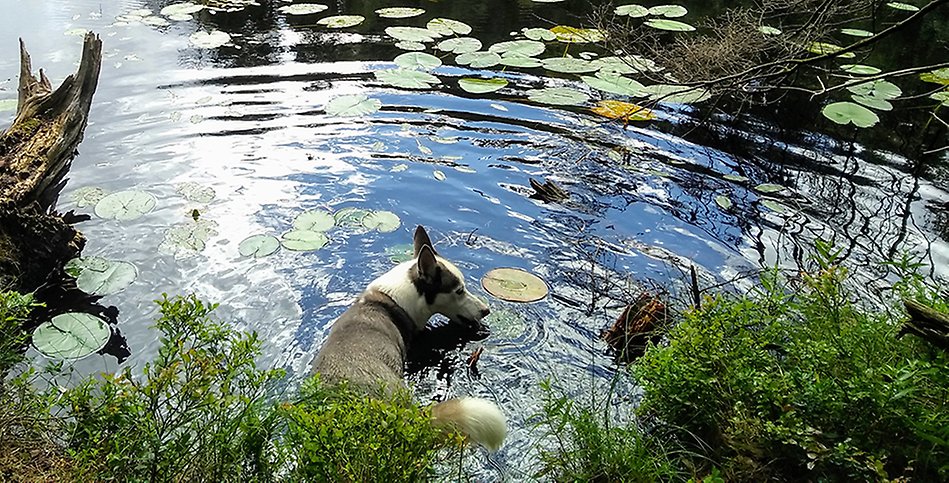
Resource recovery
Wetlands offer opportunities to recycle nutrients, especially phosphorus, to agricultural land.
Food production
Wetlands are nurseries for fish, such as perch and pike.
Carbon sink
Wetlands can store tremendous amounts of carbon. Below is a 70 cm long core of carbon in the form of dead vegetation from a 15-year-old experimental wetland.
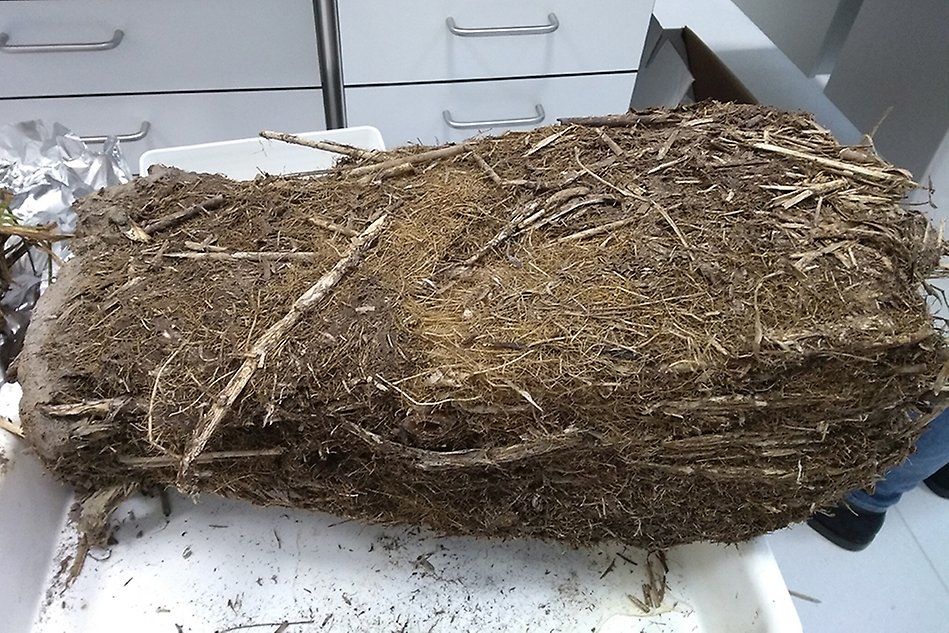
Wetland Research Centre’s strategy
The Wetland Research Centre is an independent centre with its base at Halmstad University. Our network includes people with high expertise and practical experience in wetlands, eutrophication and land-water interactions. We have mutual exchanges with farming organisations, international and national research groups, educational activities, municipalities, specialists, officials, consultants and non-profit associations. Our partners include SLU in Uppsala, Aarhus University, Linnaeus University, Sydvatten, Hushållningssällskapet, Kalmar County Administrative Board, Ljungby Municipality, Smålands Sjörike and the Swedish Environmental Protection Agency. Our research is presented at national and international conferences.
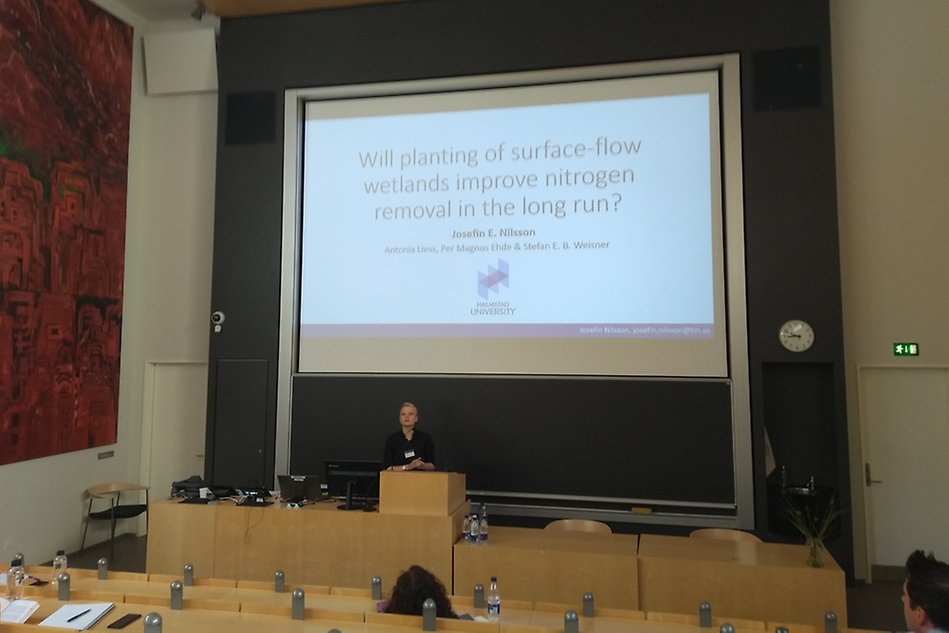
The Wetland Research Centre addresses wetland issues by:
- developing criteria for the design and sizing of wetlands, especially with regard to optimising nutrient reduction under varying hydrological regimes
- developing methods for creation and management
- studying the role of wetlands in the protection of the global environment (e.g. as carbon sinks, through water storage, for climate regulation)
- contributing to the development of methods for comprehensive planning of wetlands linked to environmental objectives
- contributing to the development of wetland assessment methods
- providing opportunities for further education, training and dissertations by providing expertise, equipment and facilities
- being an attractive centre of excellence for researchers and external stakeholders
- attracting study visits, further education, conferences and collaborative projects
About the research group
In the research group, Halmstad Aquatic Research Group, the following researchers are included:
Collaboration and contact
Are you interested in wetland research? Would you like to work with us? Get in touch with Antonia Liess.
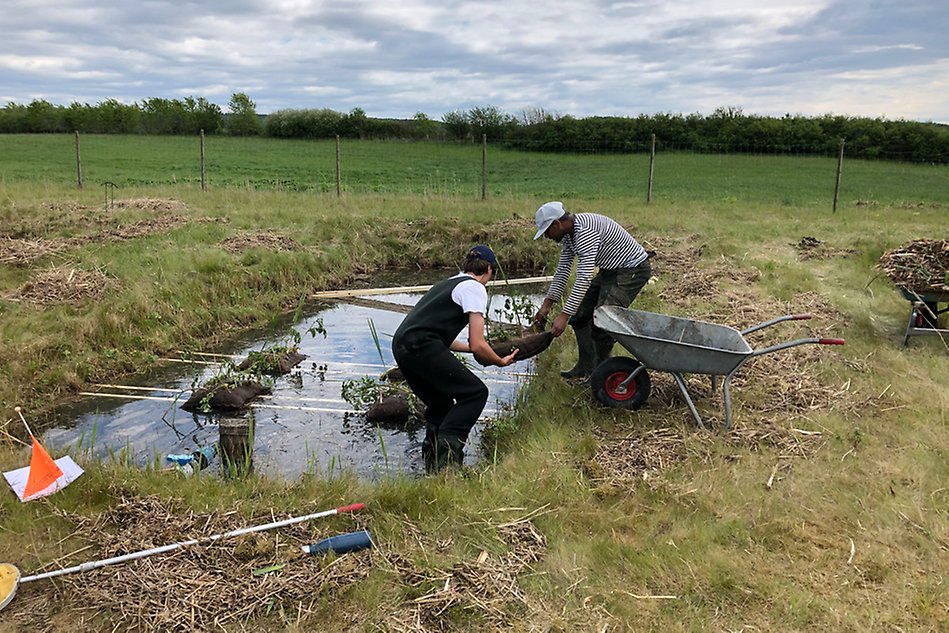
Read more about the work and activities of the Wetland Research Centre
Halmstad University: Challenges and success with wetlands of the future
Related research projects
Optimizing future wetlands for the provision of multiple ecosystem services
Constructed mini wetlands for enhancing nutrient retention (ECO-wetlands)


